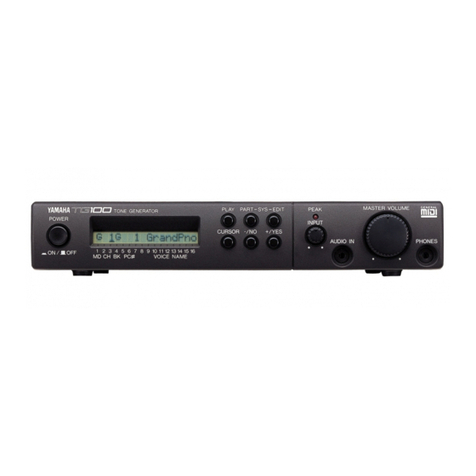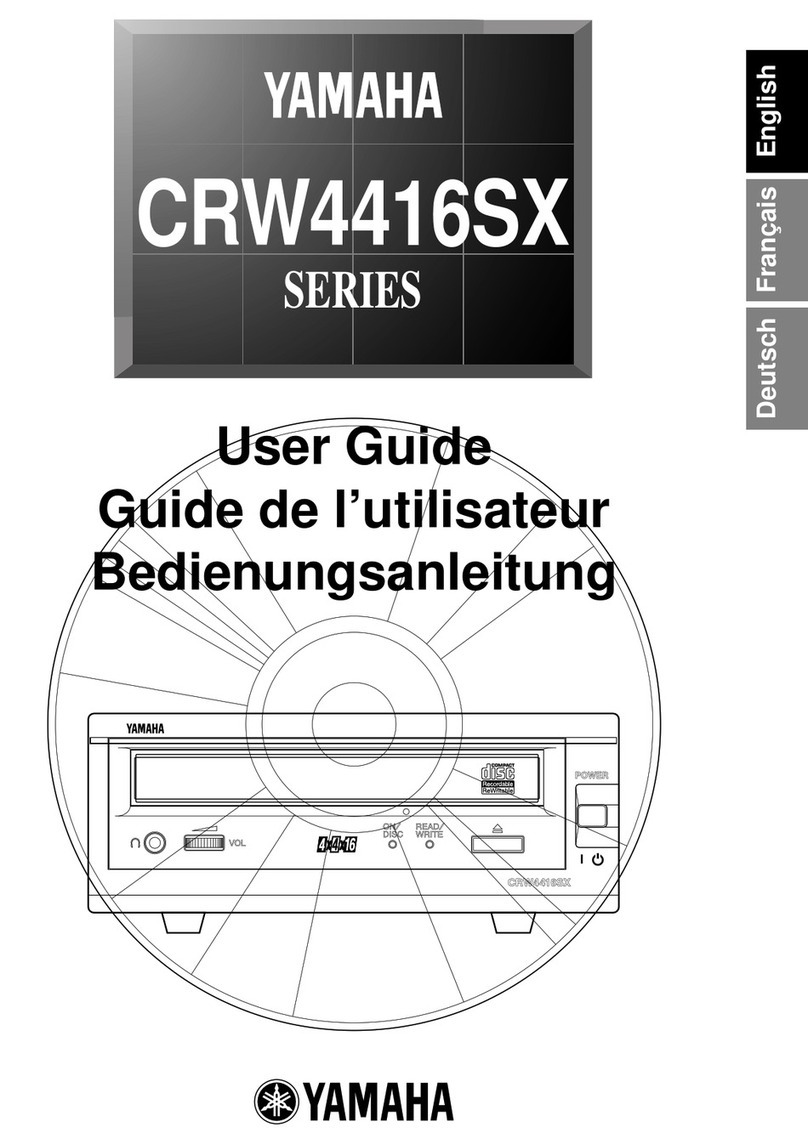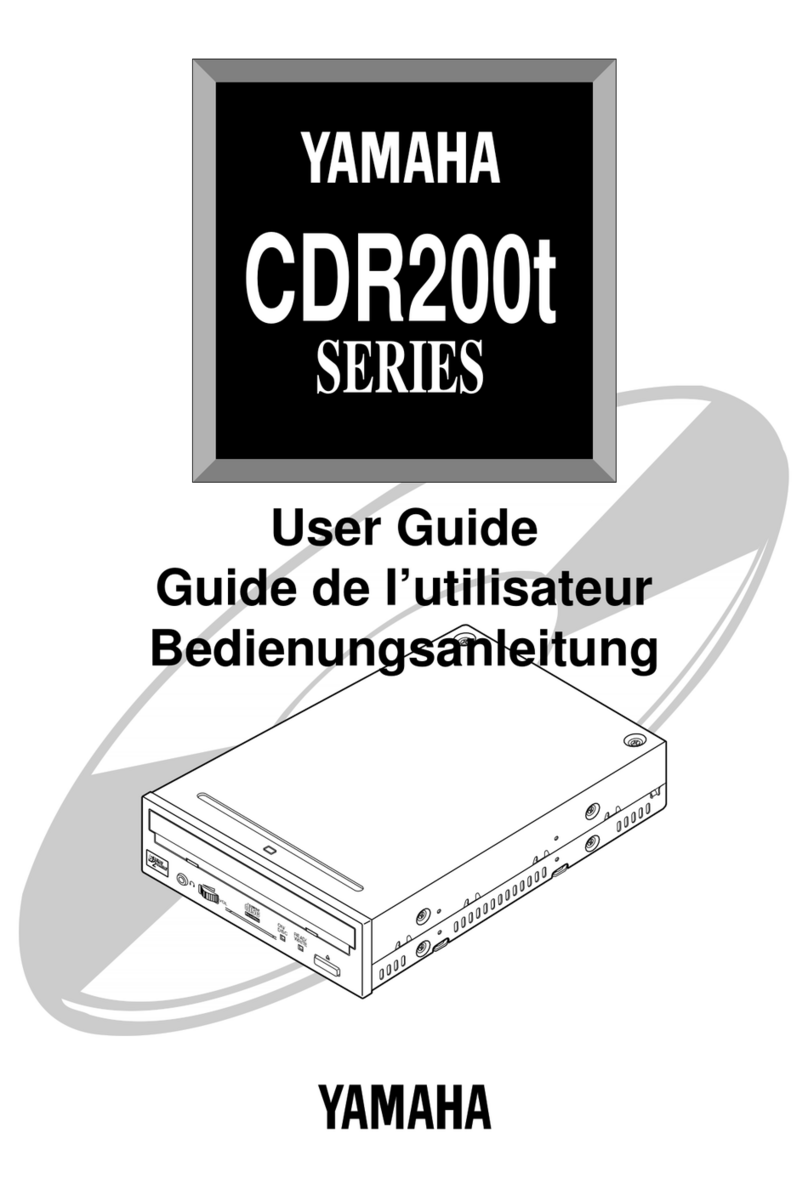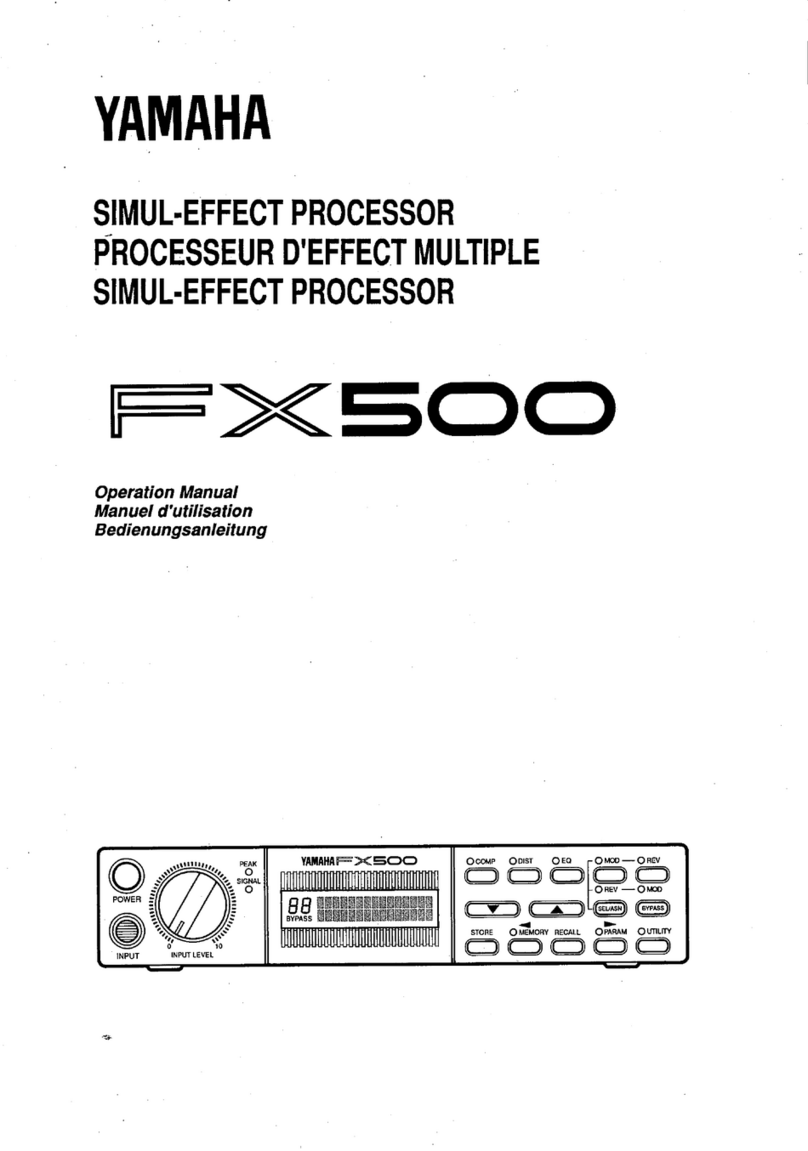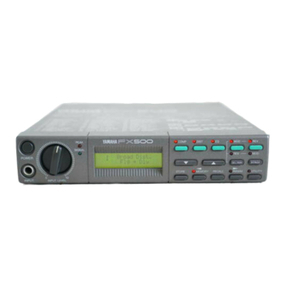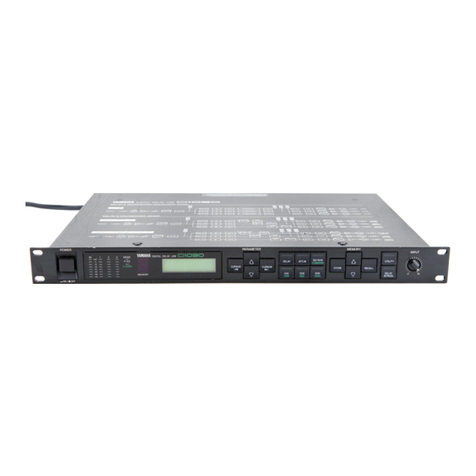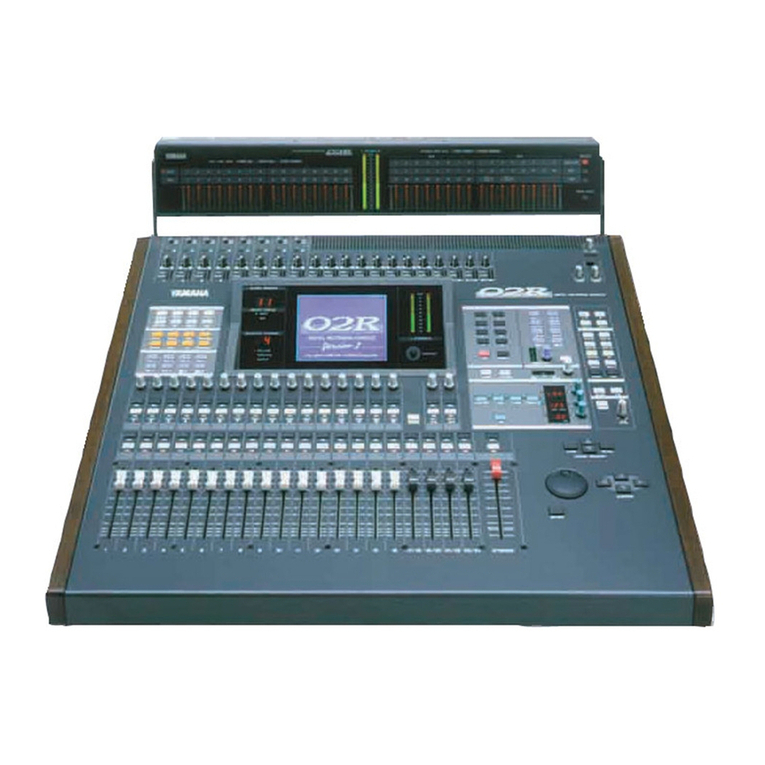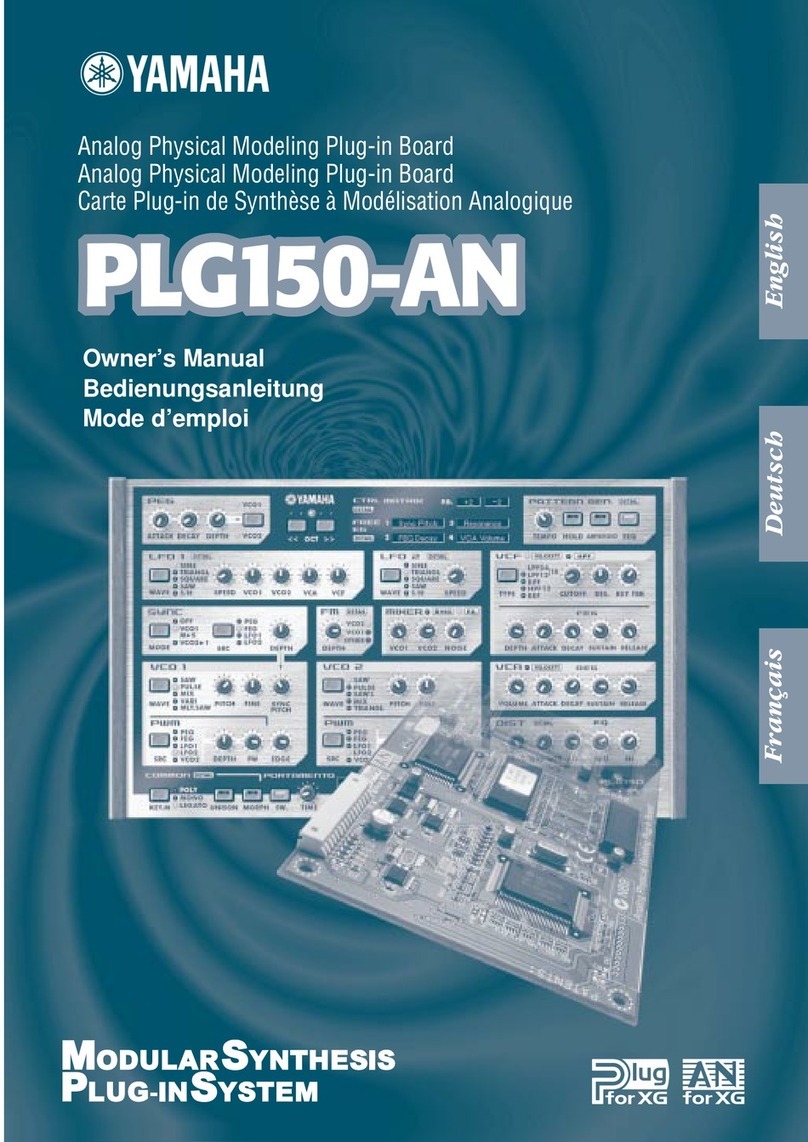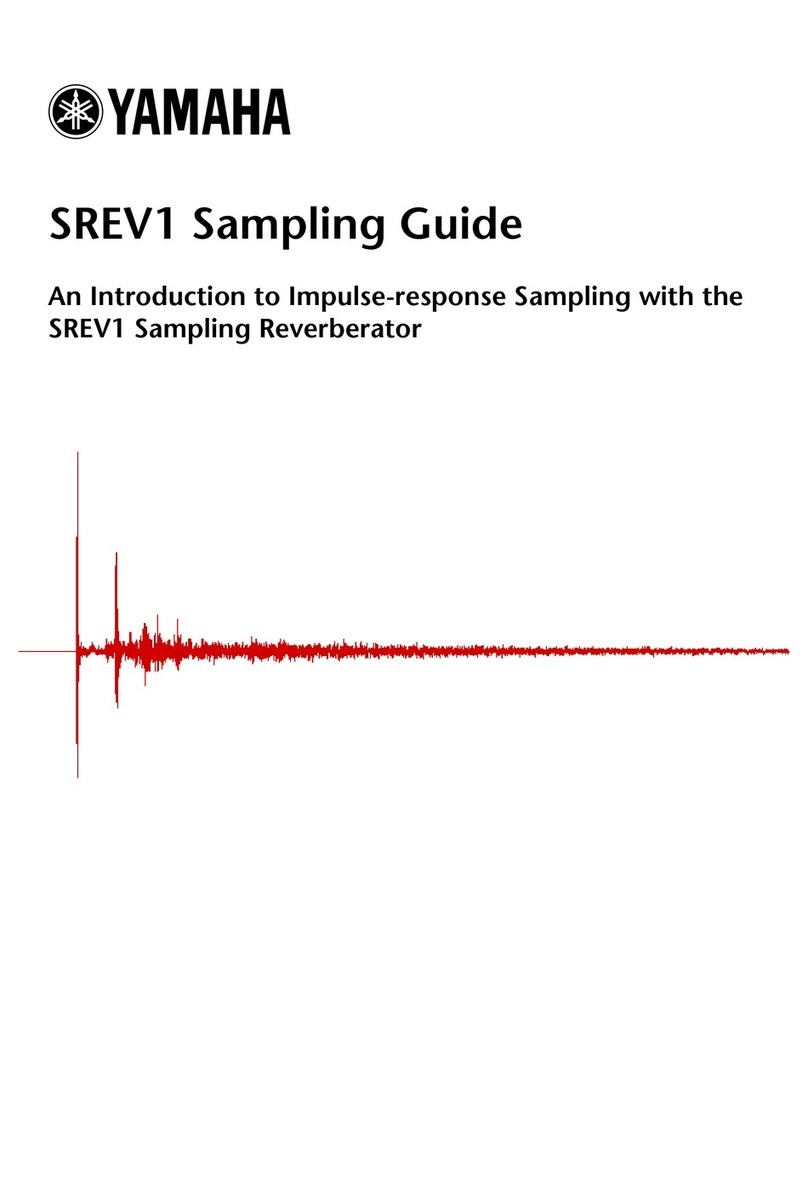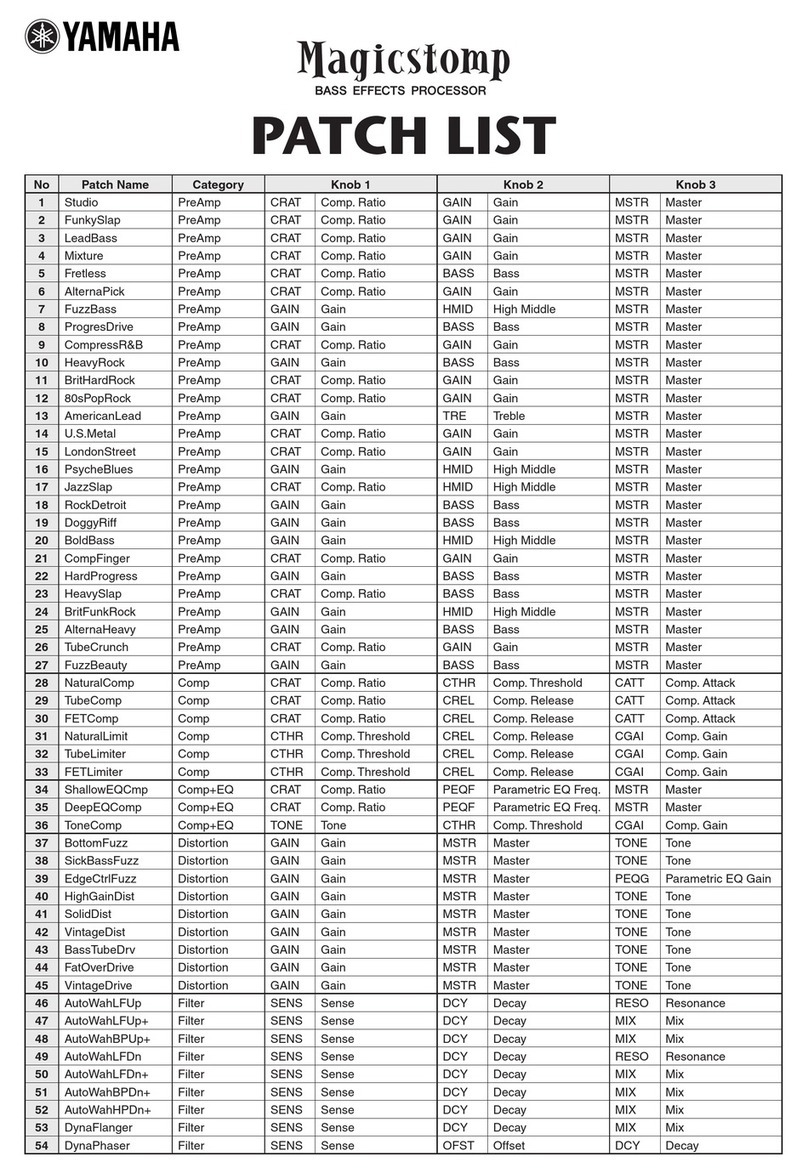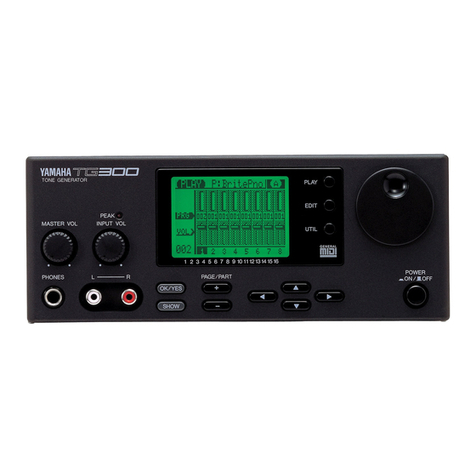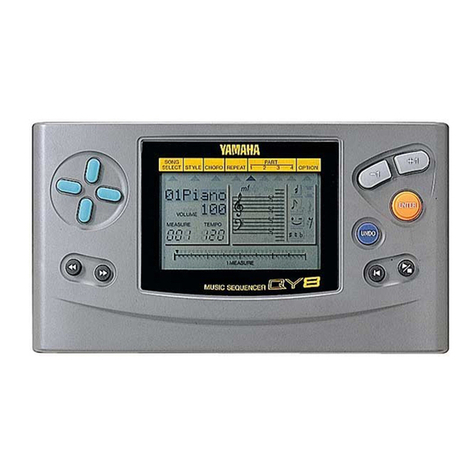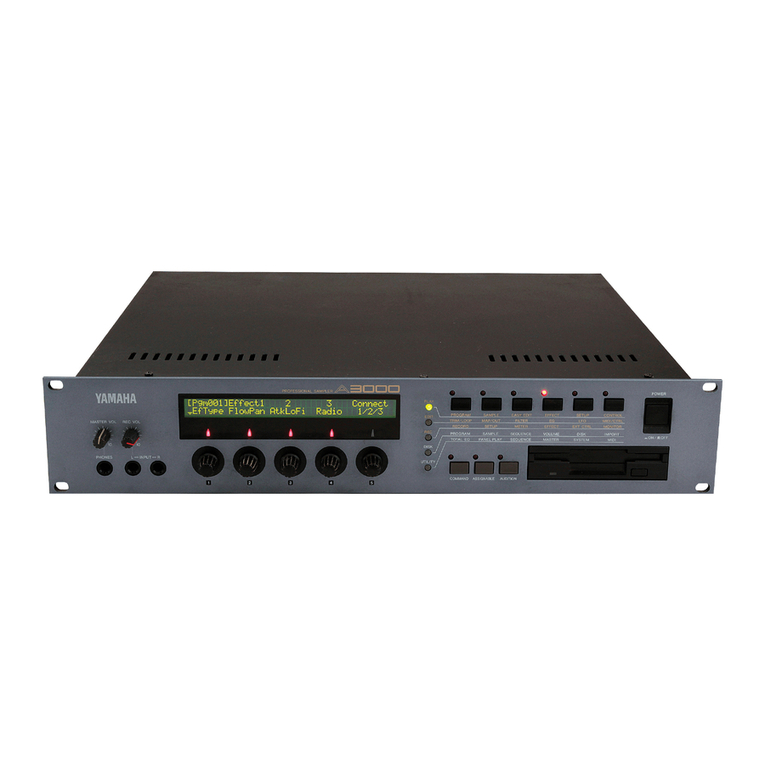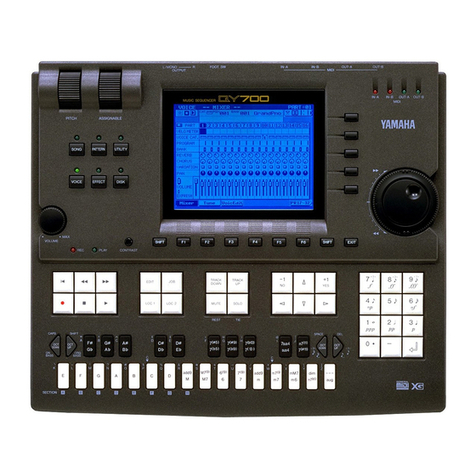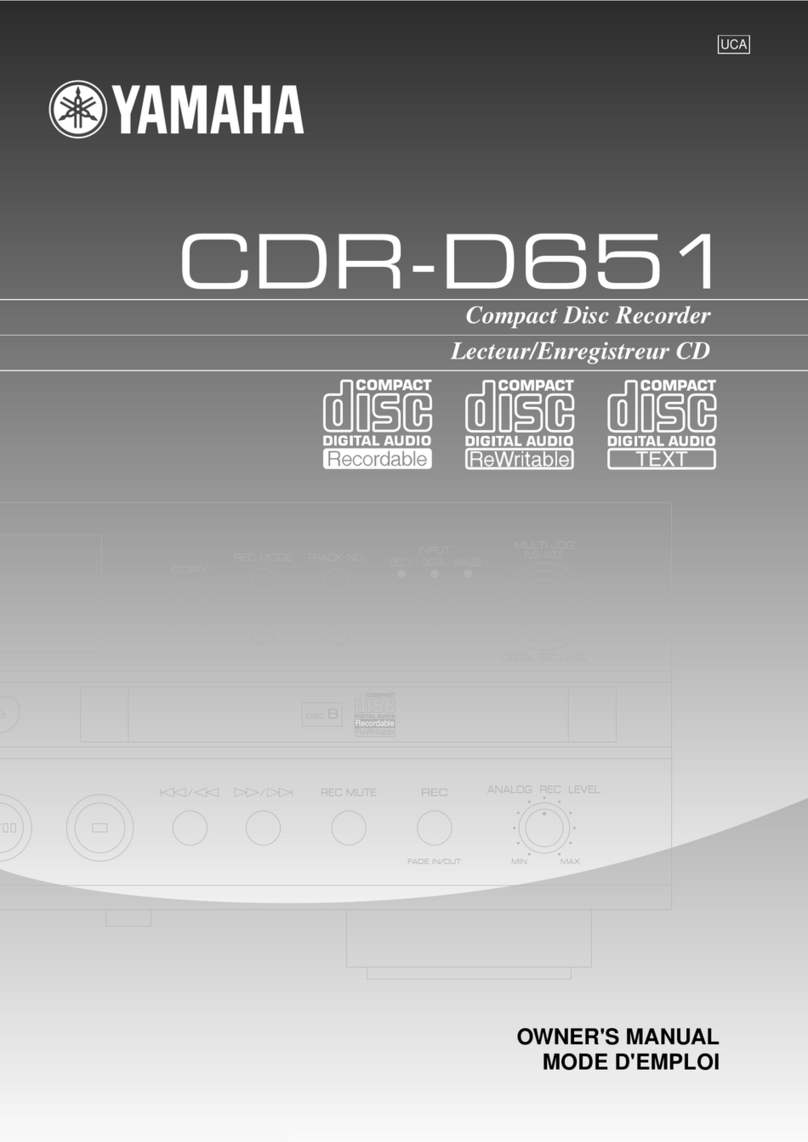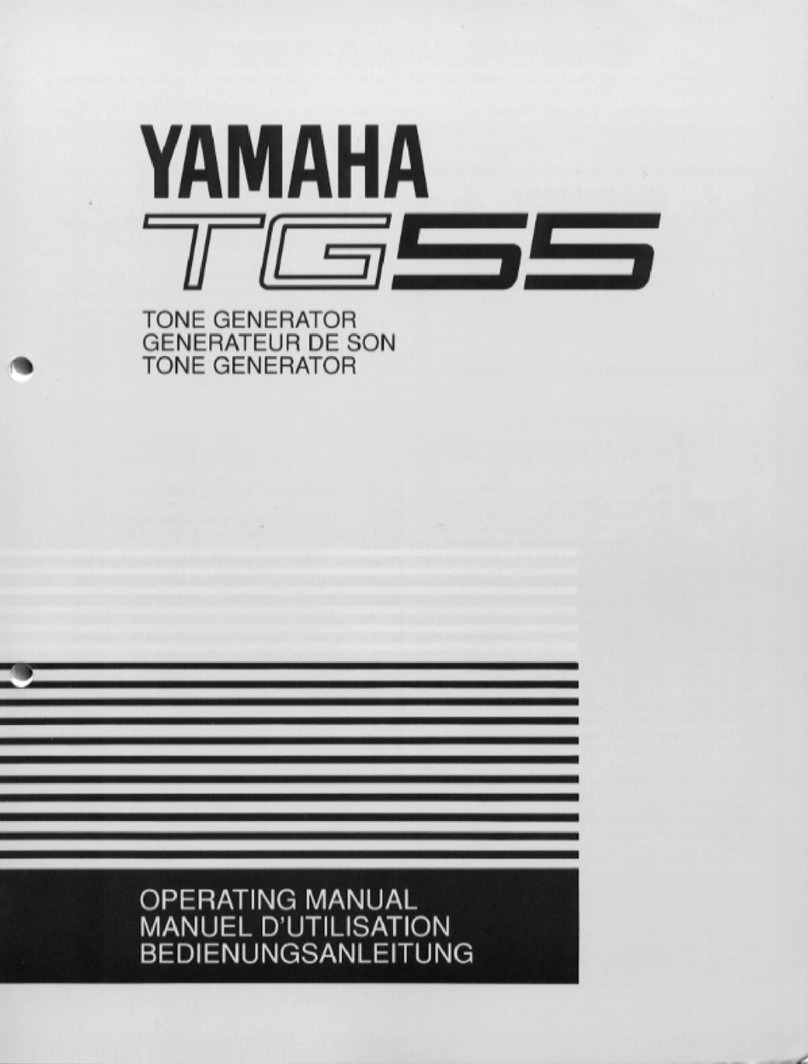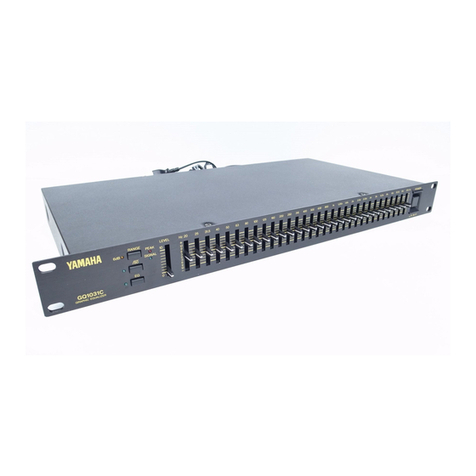
UB99A/UB99B/UB99MK2
10
• YSS910-V (XV988B00) DSP6 (Digital Signal Processor) DM: IC5
PIN
NO. NAME I/O FUNCTION PIN
NO. NAME I/O FUNCTION
1 Vdd - Power supply (3.3 V) 89 Vss - Ground
2 Vss - Ground 90 DB13 I/O
Parallel data bus
3 XI I System master clock input (60 MHz or 30 MHz) 91 DB14 I/O
4 XO O System master clock output (High or 30 MHz) 92 DB15 I/O
5 Vdd5 - Power supply (5 V) 93 DB16 I/O
6 /SYNCI I System sync. signal input 94 DB17 I/O
7 /SYNCO O System sync. signal output 95 DB18 I/O
8 Vdd5 - Power supply (5 V) 96 DB19 I/O
9 CKI I System clock input (30 MHz) 97 DB20 I/O
10 CKO O System clock output (30 MHz) 98 DB21 I/O
11 CKSEL I
System master clock select (0: 60 MHz, 1: 30 MHz)
99 DB22 I/O
12 Vss - Ground 100 Vss - Ground
13 MCKS I Serial I/O master clock input (128 x Fs) 101 Vdd - Power supply (3.3 V)
14 /SSYNC I Serial I/O Sync. signal output 102 DB23 I/O
Parallel data bus
15 /IC I Initial clear (RESET) 103 DB24 I/O
16 /TEST I Test mode setting (0: Test, 1: Normal) 104 DB25 I/O
17 BTYP I Data bus type select (0: 8 bit, 1: 16 bit) 105 DB26 I/O
18 /IRQ O IRQ output 106 DB27 I/O
19 TRIG I/O Trigger signal input/output 107 DB28 I/O
20 Vdd5 - Power supply (5 V) 108 DB29 I/O
21 Vss - Ground 109 DB30 I/O
22 /CS I Chip select signal input 110 DB31 I/O
23 /WR I Write signal input 111
TIMO/DBOB
I/O
Timing signal output/ Parallel data bus output control input
24 /RD I Read signal input 112 Vss - Ground
25 CA7 I
Address bus of internal register
113 Vdd5 - Power supply (5 V)
26 CA6 I 114 DA00 I/O
Memory data bus
27 CA5 I 115 DA01 I/O
28 CA4 I 116 DA02 I/O
29 CA3 I 117 DA03 I/O
30 CA2 I 118 DA04 I/O
31 CA1 I 119 DA05 I/O
32 Vss - Ground 120 DA06 I/O
33 Vdd - Power supply (3.3 V) 121 DA07 I/O
34 CD15 I/O
Data bus of internal register
122 Vss - Ground
35 CD14 I/O 123 DA08 I/O
Memory data bus
36 CD13 I/O 124 DA09 I/O
37 CD12 I/O 125 DA10 I/O
38 CD11 I/O 126 DA11 I/O
39 CD10 I/O 127 DA12 I/O
40 CD09 I/O 128 DA13 I/O
41 CD08 I/O 129 DA14 I/O
42 CD07 I/O 130 DA15 I/O
43 CD06 I/O 131 Vss - Ground
44 Vss - Ground 132 Vdd - Power supply (3.3 V)
45 Vdd - Power supply (3.3 V) 133 (n.c) - Not used
46 Vdd5 - Power supply (5 V) 134 Vdd5 - Power supply (5 V)
47 CD05 I/O
Data bus of internal register
135 DA16 I/O
Memory data bus
48 CD04 I/O 136 DA17 I/O
49 CD03 I/O 137 DA18 I/O
50 CD02 I/O 138 DA19 I/O
51 CD01 I/O 139 DA20 I/O
52 CD00 I/O 140 DA21 I/O
53 /WAIT O WAIT output 141 DA22 I/O
54 Vss - Ground 142 DA23 I/O
55 SI0 I
Serial data input
143 Vss - Ground
56 SI1 I 144 DA24 I/O
Memory data bus
57 SI2 I 145 DA25 I/O
58 SI3 I 146 DA26 I/O
59 SI4 I 147 DA27 I/O
60 SI5 I 148 DA28 I/O
61 SI6 I 149 DA29 I/O
62 SI7 I 150 DA30 I/O
63 Vss - Ground 151 DA31 I/O
64 Vdd5 - Power supply (5 V) 152 Vdd5 - Power supply (5 V)
65 SO0 O
Serial data output
153 Vss - Ground
66 SO1 O 154 A00 O
Memory address (SRAM, PSRAM, DRAM)
67 SO2 O 155 A01 O
68 SO3 O 156 A02 O
69 SO4 O 157 A03 O
70 SO5 O 158 A04 O
71 SO6 O 159 A05 O
72 SO7 O 160 A06 O
73 Vss - Ground 161 A07 O
74 DB00 I/O
Parallel data bus
162 A08 O
75 DB01 I/O 163 A09 O
76 DB02 I/O 164 Vss - Ground
77 DB03 I/O 165 Vdd - Power supply (3.3 V)
78 DB04 I/O 166 A10 O Memory address (SRAM, PSRAM, DRAM)
79 DB05 I/O 167 A11 O
80 DB06 I/O 168 A12 O
Memory address (SRAM, PSRAM)
81 DB07 I/O 169 A13 O
82 DB08 I/O 170 A14 O
83 DB09 I/O 171 A15/RAS O Memory address (SRAM, PSRAM), /RAS (DRAM)
84 DB10 I/O 172 A16/CAS O Memory address (SRAM, PSRAM), /CAS (DRAM)
85 DB11 I/O 173 A17/CE O Memory address (SRAM), /CE (PSRAM)
86 DB12 I/O 174 /WE O Memory write enable signal
87 Vdd5 - Power supply (5 V) 175 /OE O Memory output enable signal
88 Vdd - Power supply (3.3 V) 176 Vdd5 - Power supply (5 V)
